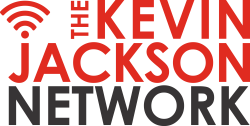
You would get better polling results on elections these days by just flipping a coin; that is if you are relying on the “experts”. I wonder at times if pollsters are the same people asking us to, “Trust the science.”
The 2020 election put the polling industry on blast, and it hasn’t recovered since. Let’s face it: pollsters don’t measure public sentiment anymore—they try to manufacture it. And when they miss the mark (as they almost always do), they shrug it off like a weather forecaster botching tomorrow’s rain.
Missing the Mark—Repeatedly
Remember 2020? Biden’s “basement campaign” supposedly racked up historic support of 81+ million voters. Yet, fast-forward to 2024, and Kamala Harris was about as popular as a tax audit by comparison. Nationally, pollsters claimed a Democratic landslide. Instead, we got the political tsunami with Trump riding the wave of the of the voters in demographics Harris was supposed to dominate.
Even the supposed big brains like Alan Lichtman, a.k.a. “Mr. I-Predict-Elections-for-a-Living,” couldn’t figure it out. Check out this interview which captures Lichtman missing the mark. Then listen for all the excuses he gives, as he missed 6 of his vaunted critical indicators:
Essentially Lichtman says that he applied no common sense indicators, and got it dramatically wrong.
And what of Ann Selzer. The revered pollster missed the boat so badly on calling Iowa for Harris that she retired. These aren’t minor flubs; they’re Titanic-level disasters that make you wonder if pollsters are just throwing darts at a wall of wishful thinking.
Pollsters or Propagandists?
The truth is, polls have become tools of the trade for partisans. Want to push a narrative? Just commission a poll! Need to conflate “illegal immigration” with “legal immigration”? Poll it into the stratosphere! The irony here is rich: Democrats clutch their pearls when a poll doesn’t favor their policies but will shout from the rooftops when a cherry-picked survey supports their latest “equity” scheme.
The 2020 polls were a case study in this bias. Over-sampling urban areas and under-sampling rural voters ensured that Trump’s support was consistently underestimated. By the time the votes rolled in, pollsters were left trying to explain how Trump could overperform, yet lose?
The Trump Effect: Breaking the Polls
If there’s one thing Trump’s resurgence has done, it’s expose just how out-of-touch pollsters are. The guy turned polling on its head in 2016, and his grassroots support has only grown. The left-leaning polling industry can’t seem to grasp the concept of populism, preferring to cling to narratives that are as out of date as last year’s Easter eggs.
Pollsters keep underestimating Trump’s ability to energize “hidden” voters—folks who don’t answer surveys because they don’t trust the system. And can you blame them? When polls skew heavily toward metropolitan elites and activists, it’s no surprise that Main Street America is left out of the equation.
Polling’s “Oh Crap” Moments
The public’s growing disdain for polls hasn’t gone unnoticed by comedians and commentators. Jon Stewart, in his signature sarcastic style, once quipped that polling is about as reliable as horoscopes. He wasn’t wrong. Stewart’s digs cut deep because they expose the industry’s central hypocrisy: pollsters demand to be taken seriously while peddling results that often border on fantasy.
Jon Stewart Loses his mind on his late night show.
“To the pollsters I don’t want o ever fu*king hear from you again”
“Blow me”#LiberalMeltdown #LiberalTears #liberalfreakout pic.twitter.com/4Nsz40alCG
— Phuzzylogic (@Phuzzyl0gic) November 6, 2024
Pollsters can’t even get the big issues right. Take immigration: Americans overwhelmingly support legal immigration but are staunchly against the illegal kind. Yet, polls routinely blur the lines, creating the illusion that most people are on board with open borders. Spoiler alert: they’re not.
The Media and Pollsters: A Love-Hate Affair
Let’s not forget the media’s role in this circus. Outlets like MSNBC and CNN amplify polling that supports their narratives but quietly bury results that don’t. It’s no wonder their credibility is circling the drain. Ratings for legacy networks have plummeted post-2024 election, with figures like Chris Wallace already kicked to the curb and Joy Reid reportedly on thin ice.
Ironically, some of these same talking heads—like Mika Brzezinski and Joe Scarborough—are now cozying up to Trump, hoping for interviews to save their tanking ratings. It warms my hear to see media kiss the ring of the very king they tried to dethrone.
What’s Next for Polling?
Polling isn’t going anywhere, but its future depends on a hard reset. To regain credibility, pollsters need to fix their broken methodologies. This means addressing nonresponse bias, embracing innovative technologies, and—most importantly—cutting out the partisan fluff. Pew Research has made strides with hybrid polling models, but there’s still a long way to go. Rasmussen was one of the only pollsters who actually got it right.
Until then, Americans will continue to side-eye every poll with a healthy dose of skepticism. And honestly? That’s a good thing. In an age where trust is the rarest commodity, the public’s willingness to question polling narratives shows they’re paying attention.
From Respected Science to Running Joke
Polling has gone from a respected science to a running joke—and nobody embodies this fall from grace better than the industry itself. As Trump prepares to re-enter the Oval Office, his base will likely continue challenging the status quo, making polling’s credibility crisis even more glaring. The question isn’t whether pollsters will survive this reckoning; it’s whether they’ll learn anything from it. My guess? Don’t hold your breath.



